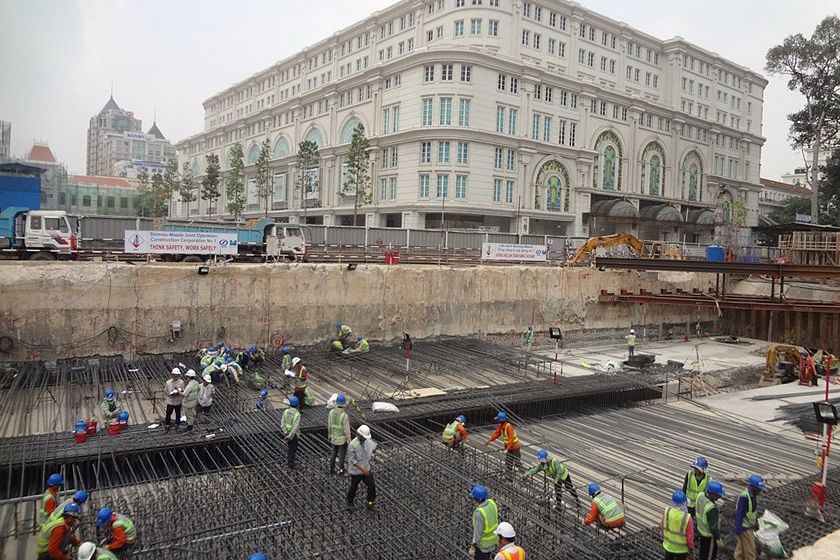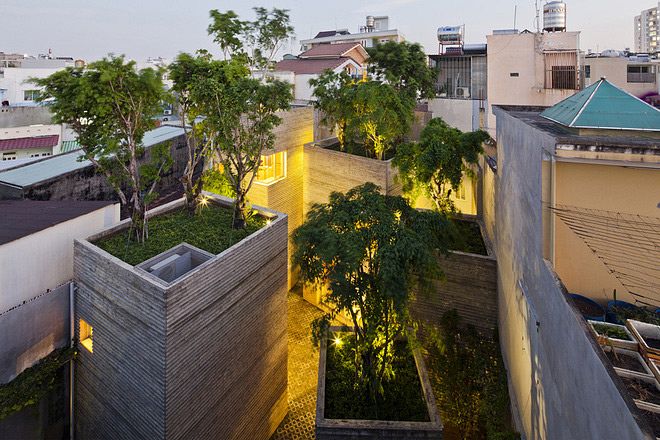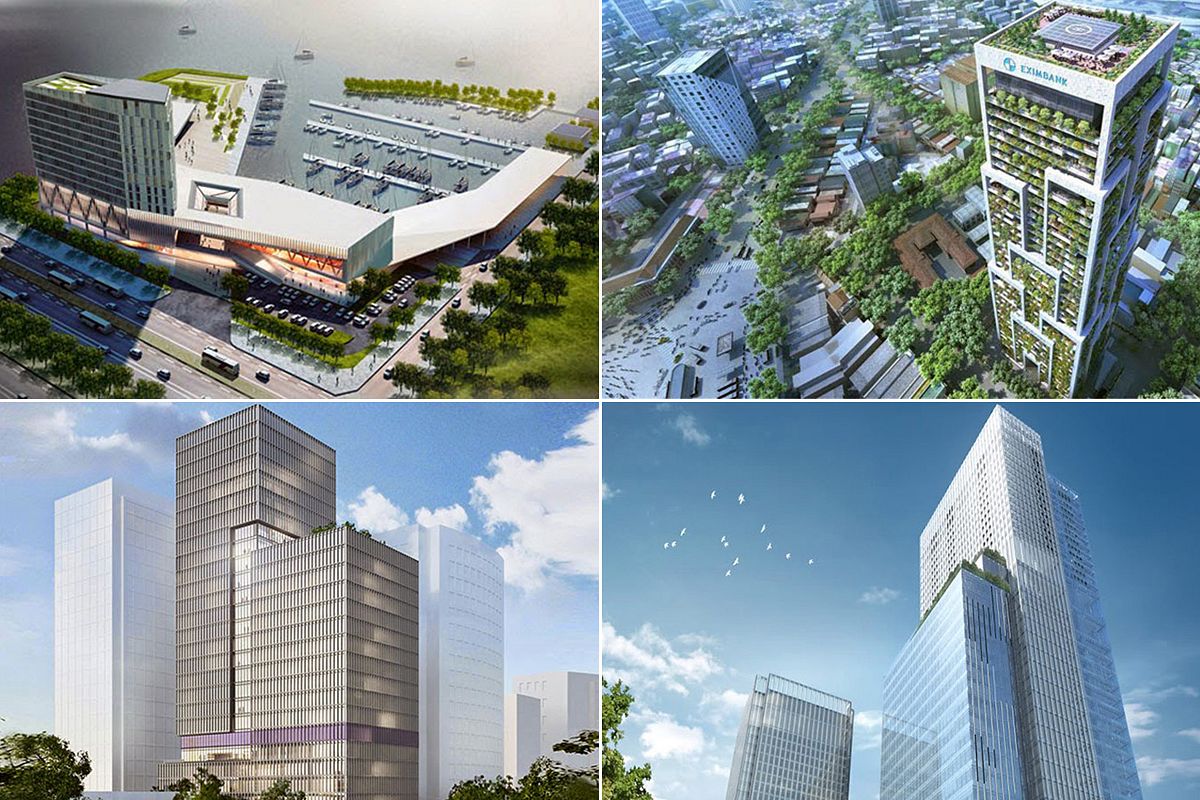The further the Saigon Metro progresses – or doesn't progress – the more we hear about escalating costs, construction hiccups and the project's Japanese contractors seeking compensation for delays. But beyond the overhead metro track in District 2 and a whole lot of closed construction sites littering the downtown area, few of us have a visual understanding of Saigon's largest public transportation project to date.
Thanks to Zing, however, you can wonder no more. During a field trip to Saigon Metro's construction site in District 1, the online news outlet takes us underground to find out what's going on behind those corrugated partitions scattered around District 1.
Everyday, metro construction begins with morning calisthenics before workers are tasked with crafting the web of steel rebar that will one day function as the floor of Saigon Metro's Opera House station. Teams beneath Pasteur and Nguyen Hue Streets excavate upwards of 500 cubic meters of earth a day in preparation for Metro Line 1.
Beyond that, there are the usual scenes, which include lunchtime at an underground construction site and a post-meal nap atop some building materials.
Currently, the Ben Thanh-Suoi Tien line has around 1,000 engineers and and construction workers on the job, while elsewhere in town, construction of above-ground stations is underway near Ba Son Shipyard heading toward Suoi Tien.

Construction workers gather for morning calisthenics before setting to work on Saigon Metro Line 1.

Each morning, engineers and site supervisors brief construction workers on the day's projects.

Because construction of Saigon Metro Line 1 goes underground, site supervisors must constantly monitor oxygen and CO2 levels to ensure worker safety.

After cutting steel reinforcing bars down to size, a group of workers carries the bars to the underground construction site.

Below the Opera House, workers create a web of steel reinforcing bars under the supervision of engineers. In late December, the rebar will be covered with 1,400 cubic meters of concrete to complete the floor of the subterranean station.

Construction workers both within and on top of the steel frame must team up to correctly thread the rebar into place.

A construction worker crouches into a small space to align the steel bars.

If the placement of the steel rebar is not correct, it must be removed and reinserted, so supervision is crucial during this process.

Dong Thap native Huynh Thi Tim assists her fellow workers.

Below Nguyen Hue, three excavators are being used in the station's construction.

Workers remove cement from iron support pillars underground.

An excavator collects dirt to remove from the construction site. Teams beneath Pasteur and Nguyen Hue Streets work around the clock to excavate more than 500 cubic meters of earth a day in preparation for Saigon Metro's Opera House station.

An excavator brings large quantities of dirt from the subterranean construction site above ground.
[Photos via Zing. Top photo via SGGP]














